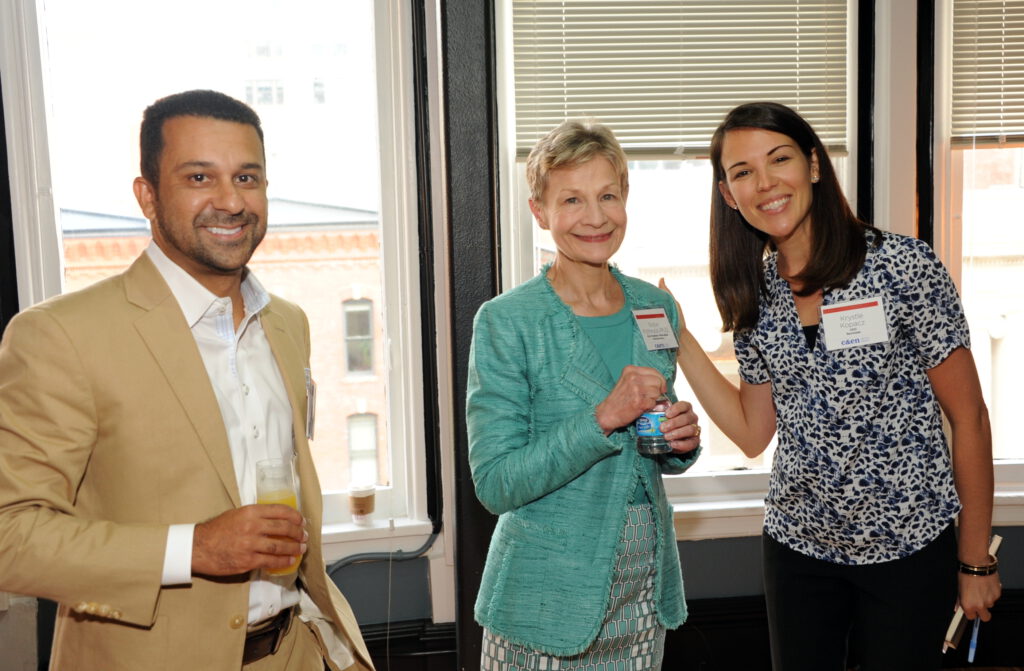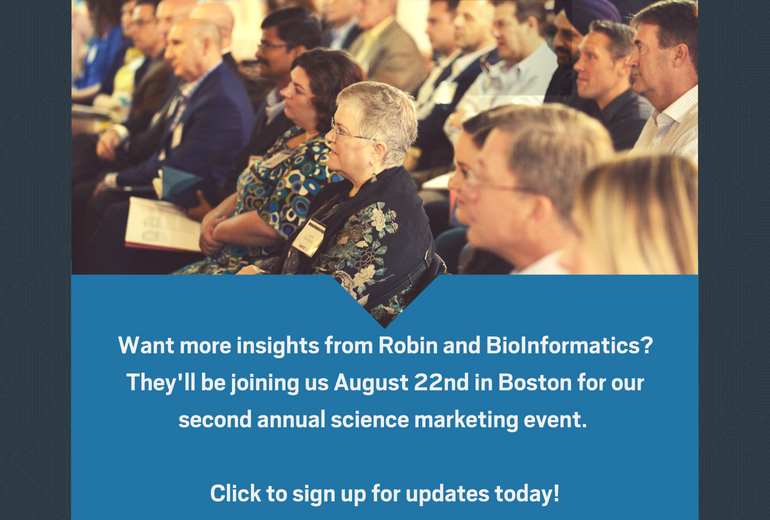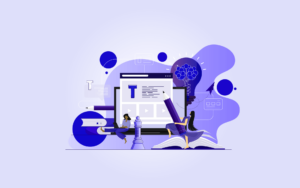Robin Rothrock has enjoyed a wide-ranging career touching all facets of basic science research, product development, sales, marketing and customer engagement. At BioInformatics Inc., a leading research and research advisory firm serving the life science, instrumentation and diagnostics sectors, she leverages this toolkit to elucidate how and why customers perceive brands the way they do across a product development cycle. In our conversation, she shares the value these analytics bring to constructing marketing campaigns, how they can be merged with creative storytelling for powerful brand messaging and why the millennial generational shift will require rethinking communications and platform strategy.
ACS Media Group: Welcome, Robin and thank you for speaking with us. Can you share your thoughts on how life science and instrumentation brands, and their respective marketing agencies, benefit from interacting with a market research and advisory company such as BioInformatics?
Robin Rothrock: Our clients, such as Thermo Fisher Scientific, BD Biosciences, and Bio-Rad Laboratories, want to fundamentally understand how their brand is perceived in the marketplace and how they stand up relative to their primary competitors. There have been so many mergers and acquisitions in this sector – the remaining brands want to know what their marketplace value is. What is the effect of having a BD Biosciences logo on a flow cytometer, for example? Is that going to make customers more receptive to the product because it is BD Biosciences, or is a flow cytometer that is offered by Beckman Coulter stronger if the features are essentially the same?
We research what it is about the strength of a brand that influences decision-making. Especially around instrumentation, since those are capital expenses. Once a lab has made that purchase-decision, they own it for five to seven years, if not longer.
C&EN: BioInformatics employs a combination of bottom-up and top-down research methodologies. Can you elaborate on what that is and how it is applied to attain information about brand strength and perception?
Robin: BioInformatics has always been focused on what we consider to be a bottom-up approach. We conduct primary, “voice of the customer” research, used in lots of different ways. A client might come to us for a study to understand their brand strength or how they’re perceived by customers in the marketplace. Clients also apply that basic information in many different ways. It could be used as a baseline, how customers perceive them now, and then if they’re planning a change, they can essentially run the same survey six months or 12 months in the future and see how the needle has moved.

We also perform new product development studies. Clients have a concept, a product that’s in development, and they believe in it internally, but they want to make sure that it meets customer needs, and they want to get an unbiased take on that. BioInformatics also publishes original market research studies, as we discussed at the ACS Media Group event last summer.
C&EN: And the top-down approach?
Robin: Our Strategic Directions International division’s tremendous strength is in that secondary research. For example, if we want to have a robust financial model for a given technology or instrumentation class, we work with our team in Los Angeles to take advantage of all their secondary research in financial information, which they have been collecting and harvesting data on for 25-30 years.
They have algorithms that they’ve applied to work with the financial information to come up with a robust model of a market size. We combine SDi’s secondary research with our primary research perspective to enhance and refine those models. You can get one type of estimate from the financial reporting, such as general market size. For a more segmented perspective, you ask customers “Well, how much are you spending, how much do you perceive you’re spending, how often do you make these purchases,” and so on. Ultimately, you collect as many points of view as possible to help clients make really sound business decisions.
C&EN: You’re describing a very holistic and meticulous analysis. Do marketing companies (or brands themselves) sometimes execute these studies on a smaller scale?
Robin: Creative companies can execute on a per campaign basis. The way companies are successful doing that is that they already have a good sense for who they are and what they do really well. In a campaign that has a really defined tactical objective, they leverage what they already know. For example, when I was at ATCC, and I was there to commercialize their new primary cell product portfolio, I did research to understand how ATCC was perceived in the market. And I was also contributing to new product development initiatives.
But one thing that we learned in our research was how customers spontaneously used the word “trust” when they were talking about ATCC. For scientists to spontaneously say, “Well, I really trust ATCC to do X, Y and Z, to provide me with this,” is very striking. I was able to use that language in my communication campaign to launch this new product initiative.
C&EN: Sounds like creative strategies can go hand in hand with the underlying market research that you’re providing.
Robin: Absolutely! And I believe the most successful marketing campaigns now have a strong digital component. But it’s important to note that sometimes because of their “novelty,” going back to some of the older forms of communication—for example, print advertising—is still powerful. If the messaging is clever or beautiful, then it will still resonate with customers.
C&EN: How does BioInformatics typically work with creative marketing agencies on specific campaigns?
Robin: Sometimes agencies partner with us at the very beginning of brand development. For example, if a company has been using the same language for the past fifteen years, during which time the market has changed rapidly, they may not feel certain that they’re resonating with their current – and future – customer base. Before any rebranding we need to understand how they’re perceived now, and how that perception varies by age, the industry in which they work, or based on region. Is the company seen in the same light in the United States compared to Europe, India, China, Brazil? Are the words used to describe the company the same or different, and why?
Depending on the agency, we may have different communication hypotheses that we want to test. We may want to tease out, in this landscape of competitors, where does our client’s company sit in this hierarchy of brands that can be considered? And who are their closest competitors and how are they perceived?
We provide a combination of qualitative research, comprised of focus groups or one on one interviews, combined with a quantitative study that tests some of the hypotheses that were there at the beginning of the project, or to further refine some new information that we had learned from qualitative research. Fundamental marketing basics are still important. They are touched on for how companies want to be perceived, who they are, and what they want to be known for. The channels that companies use to convey that message are changing dramatically because of the larger marketing communication environment.
C&EN: As a campaign or product development changes, how does this change the information you are asked to procure?
Robin: There are different sets of questions at various stages of product development, and that would change as you’re journeying to the end. You can start with querying customers about different concepts useful to them: what do they find of interest, what they like and don’t like, – all those exploratory items. Then, as a brand matures, you find what people value about this product. Why do they value it, how good does this feature have to be? When you take the product to the next stage of development, where it can do X, Y and Z in a certain time frame, you might ask how interested the scientist is in those features, what are the perceived strengths and weaknesses, which company do they think would sell a product like this, how much would they pay for it, and so on.
There can be some questions that remain static throughout a campaign, but there are others that change or are follow ups because you have a better idea about the product, depending on the type of decision a client needs to make.
C&EN: Your research measures effectiveness of marketing information in impacting brand perception. How can content best be leveraged to tap into the emotional core of today’s customer?
Robin: One of the conclusions of our most recent report on 2018 Trends in Marketing to Life Scientists is that scientists are really creative people, but they’re also really practical. A lot of their decision-making is based on what they need to make the right decision, for example, to purchase a certain instrument. One of the most powerful things that a manufacturer or supplier can do is a very old-fashioned thing — set up a demo in a laboratory and give people the experience of working with that instrument and seeing what it can do in their own hands! And there’s nothing new about that. But it reinforces something that we talk about a lot today, which is the power of experiential marketing. People want and need that, in a world where there are so many words.
One thing vendors in this space can think about is taking advantage of virtual reality or augmented reality. Scientists are cerebral, and they’re creative, but just like anyone, they’re looking for things that can help them be successful. They see themselves as creative and innovative, and they’re looking for tools that allow them to express that. And they want those tools to be robust and reliable and to be able to count on them. Those are real virtues associated with those solid values.
C&EN: Are your client studies or research reports revealing significant changes over time? Have certain aspects of branding remained static? Have they evolved as marketing and digital communication has empowered customers?
Robin: Scientists have always been extraordinary collectors of product information. I observed it when I was a sales rep, when I was in product development, and throughout my whole career. It has only been exacerbated by the onslaught of digital media and how much information is available online. Scientists sign up for webinars and newsletters and to be on email lists, have joined listservs, they go to meetings, they collect literature on products, and so on. One could argue that scientists have been ahead of the curve in terms of doing research before they engage with a company.
There is an astounding generation change afoot. As Murad Sabzali of CG Life has spoken about, Xennials and Millennials, who are a larger cohort at this point than baby boomers, have markedly different preferences for how they want to consume information and for learning about new things in their lives outside of their professional lives.
Let’s say 65% of life scientists, a majority of them, will have watched some sort of scientific video over the past 12 months. And that may be constant based on age. But you start seeing differences when you ask: “How did you view that content?” Younger scientists are going to be more likely to watch videos using their smart phone compared to older scientists. This underscores a need for ensuring digital content is even more mobile compatible than it currently is.
Younger scientists also find supplier-sponsored content more useful and valuable than older scientists. Thought leadership is starting to make a difference. That may be related to the iGen Generation and the importance of words and looking to authority figures for guidance. Younger scientists may also have slightly different ways of verifying information compared to older scientists. The importance of peer-reviewed publications is still going to be important, but so are customer reviews and thought leadership.
C&EN: Everything you’ve just described seems like a transformative inflection point to how people consume and interpret the information that leads to their decision-making. Is this being reflected in changes to the metrics we’ve discussed in this interview – brand awareness, perception, loyalty?
Robin: Some of the marketing-related research that we’ve done over the past few years has been pointing in that direction, and is more thoroughly elaborated on in our recent report. Scientists go to graduate school, they have mentoring experiences when they’re graduate students in the laboratory, they become postdocs, and eventually professionally employed. They are constantly improving their skills. You’ll see younger scientists working on their ‘brand’ and using the tools of social media as a way to communicate with other scientists who are also social media savvy. What is interesting, and at this point not answered, is what the true power of social media is. It gets a lot of things started, but doesn’t seem to get a lot of things done.
Why does that matter in our industry? Scientists are ultimately still measured by the strength and history of their academic publications, which means that work still needs to be done. Scientists can’t just talk about their work and how great it could be; they actually have to get to the lab and do the research. How they accomplish that may be through acquiring multiple layers and sources of information. And as everyone knows, these days there are more of those sources to take into consideration. Suppliers create content as one stream of information, delivered on multiple platforms. Even scientific publications are being delivered that way. The change is in how scientists are interacting with those different platforms and how some platforms are becoming more valued and more useful or used than others.
Thanks so much to Robin for chatting with us. As she points out, the basic building blocks of modern marketing campaigns are predicated on understanding how a particular brand fits in its overall sector throughout its development cycle and how it is perceived and valued by its customer base. This process requires meticulous research, targeted questions, surveying customers, positioning products, and is ongoing over a brand’s lifetime. And grasping segmented customer bases and their habits is more important now than ever. Science is experiencing a generational shift in values, data sharing, technology integration, and information consumption as Xennials and Millennials come of age in the workforce.
At the end of the day, Robin reminds us that the cornerstones of evocative, interesting, resonant and visual communication are more important than ever. They are just more effective when buoyed by carefully cultivated market research data, and thinking deeply about current audience, and your future one.



















